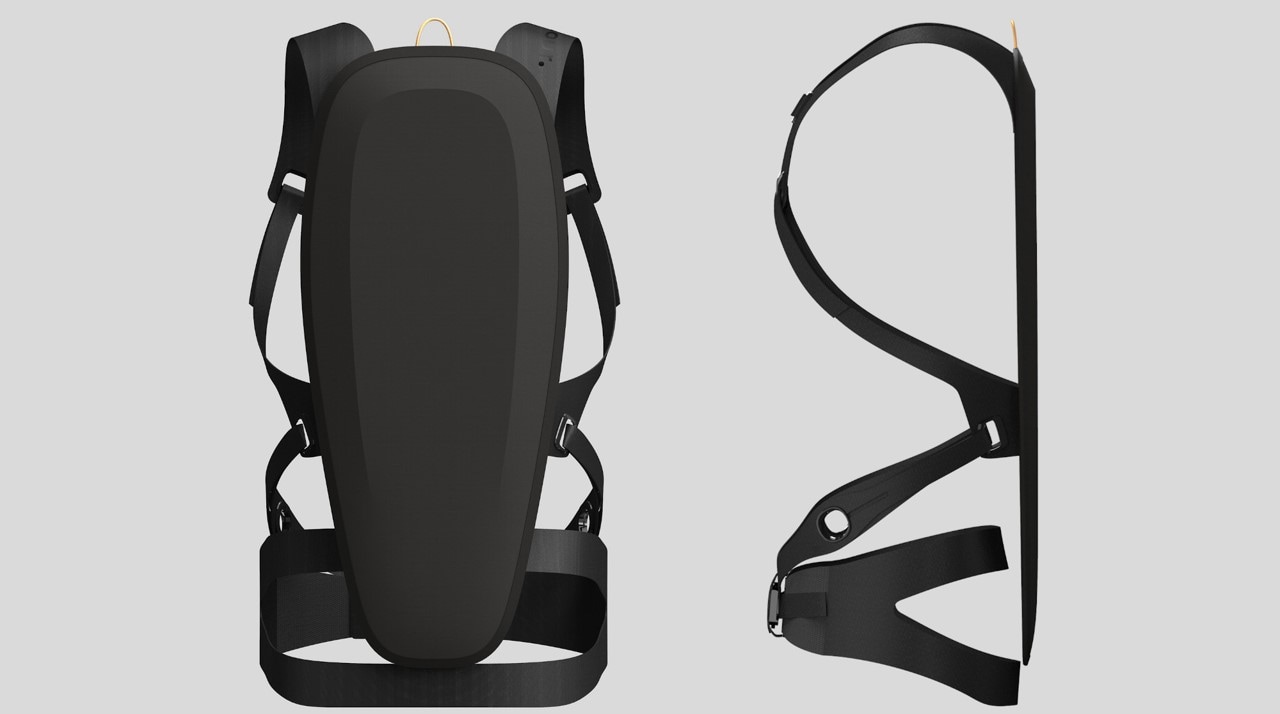Generative design helped designing a revolutionizing
and award winning back protector
Using generative design technology, the team was able to come up with multiple design options to test prototypes at an early stage of development and create a component that could be easily implemented into the manufacturing process. When spinal rotation enters a critical stage, the implemented X straps on the Rotational Spine Protection system (RSP) begin to tighten and with the help of a specialized reversing mechanism, found at the waist, rotational energy is redirected and absorbed to protect the user from potential injury.
In 2019, the revolutionizing RSP system was recognized as an ISPO Brandnew Award finalist, a designation reserved for the most promising newcomers of the sports gear industry.
adamsfour won't distribute the RSP system on their own. It is a business-to-business technology—they will sell it as a kit to other manufacturers to be incorporated into their own products.


